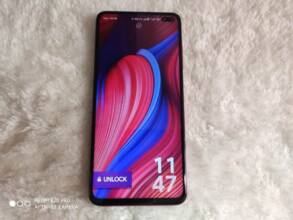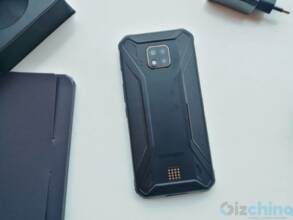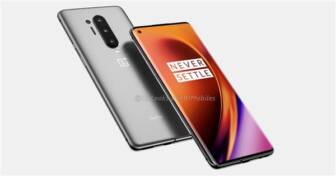Meizu E3 vs Xiaomi Redmi Note 5 Hands-on Comparison Review: Which One Should You Buy?
Meizu has just announced its second phone with a Qualcomm SoC that could be one of the best sellers of 2018. This medium looks like a perfect rival of the Xiaomi Redmi Note 5, the new affordable Xiaomi handset that has already had tremendous success in Asia. Will Meizu be able to compete with Xiaomi this year or will Xiaomi Redmi Note 5 be the best phone to buy at an affordable price like its predecessor? With this comparison of specifications, we will try to understand which is the best among Meizu E3 vs Xiaomi Redmi Note 5, and that has the best value for money.
| Meizu E3 | Xiaomi Redmi Note 5 | |
|---|---|---|
| Dimensions and Weight | 156.8 x 75 x 7.6 mm, 160 grams | 158.6 x 75.4 x 8.1 mm,181 grams |
| Display | 5.99 inches, 1080 x 2160p (Full HD +), 403 ppi, 18: 9, IPS LCD | 5.99 inches, 1080 x 2160p (Full HD), 403 ppi, 18: 9, IPS LCD |
| Processor | Qualcomm Snapdragon 636, octa-core 1.8 GHz | Qualcomm Snapdragon 636, octa-core 1.8 GHz |
| Memory | 6 GB RAM, 64 GB – 6 GB RAM, 128 GB, micro SD slot | 3 GB RAM, 32 GB – 4 GB RAM, 64 GB – 6 GB RAM, 64 GB – micro SD slot |
| Software | Android 7.1.2 Nougat, Flyme 6 | Android 7.1.2 Nougat, MIUI 9 |
| Connectivity | Wi-Fi 802.11 b / g / n / ac, Bluetooth 5.0, GPS | Wi-Fi 802.11 a / b / g / n, Bluetooth 4.2, GPS |
| Camera | Dual 12 + 20 MP f / 1.9 + f / 2.6 8 MP f / 2.0 front camera |
Dual 12 + 5 MP f / 2.2 + f / 2.0 20 MP f / 2.0 front camera |
| Battery | 3360 mAh Fast Charging 20W (mCharge 3.0) |
4000 mAh Quick Charge (Quick Charge 2.0) |
| Others | Dual SIM Slot | Dual SIM Slot |
Both devices share many specifications. They have the same screen size and resolution, although the Meizu E3 is a bit more compact. Both come with a Snapdragon 636 processor, although they have differences in memory. The Meizu E3 comes with 6GB of memory and up to 128GB of storage capacity, while the Redmi Note 5 comes with the same memory but 64GB of storage. At the level of the rear cameras, the Meizu E3 seems to be more interesting with a dual camera configuration consisting of 20 + 12-megapixel sensors and f / 1.9 aperture. Redmi Note 5 seems to be the camera-level winner for selfies with a 20-megapixel sensor. Also highlights a better battery. The Xiaomi’s has 4000 mAh and that of the Meizu 3360 mAh. At the price level, the Xiaomi Redmi Note 5 costs about $219.99 in the 3 / 32GB variant and $249.99 in the 4 / 64GB configuration. Meanwhile, the Meizu E3 costs more than $335.99 for the 6 / 64GB version and $386.99 for the 6 / 128GB version.
Design, Display, and Fingerprint Reader
Meizu has almost never done any disappointment for their designs. Their pursuit of beauty is obvious to everyone in the industry. The Xiaomi has also improved a lot in design aesthetics in the past two years. From an ordinary consumer’s point of view, this time, the Meizu E3 still outperforms the Redmi Note 5 in overall value.
Meizu E3 was made in a similar, but not identical style, as the Xiaomi Redmi Note 5. The design of the front panel and the arrangement of the two lenses on the back wall are similar. The equipment also combines the use of aluminum for the production of the rear panel.
Most changes are visible on the back wall and the right side of both devices. As far as I can show you the advantages and disadvantages of both designs, in this category, there is no win or lose for me. The design of both devices is just a matter of taste – one may be better for the Meizu E3, others will appreciate the design of the Xiaomi Redmi Note 5.
A huge plus for Meizu for the placement of antenna strips that run over the top and bottom frame. Huawei decided to use a similar arrangement in the P10 model, so in a device that I appreciate very much. Xiaomi went along the shortest resistance line and … we get a slightly archaic design – aluminum combined with plastic inserts as well as metalized strips.
It is worth to lean on the dimensions because Meizu managed to implement a display with the same diagonal to a smaller housing, and this is a huge advantage – the more that the phone is also lighter than Xiaomi by 21 grams, and that’s a lot.
| Meizu E3 | Xiaomi Redmi Note 5 | |
| Diagonal | 5.99 “ | |
| Width | 75 mm | 75.4 mm |
| Height | 156.8 mm | 158.6 mm |
| Thickness | 7.6 mm | 8.1mm |
| Weight | 160 g | 181 g |
 Meizu E3 in some details than the Redmi Note 5 or to be more elegant, such as the following parameter table, in the same case with a 5.99-inch full screen, the former’s measurements are smaller than the latter’s size. This means that the Meizu E3 has a higher screen share and a slimmer body, which is more noticeable after getting started.
Meizu E3 in some details than the Redmi Note 5 or to be more elegant, such as the following parameter table, in the same case with a 5.99-inch full screen, the former’s measurements are smaller than the latter’s size. This means that the Meizu E3 has a higher screen share and a slimmer body, which is more noticeable after getting started.
An important difference is the location of the fingerprint reader, which in the case of Meizu E3 is on the right side, and in Redmi Note 5 on the back wall. Regardless of the location and additional functionality, both readers should react very quickly and precisely (at least according to the manufacturer).
Quick Charge vs mCharge: the winner can only be one
In Meizu E3, a 3500 mAh battery has been closed, which I think is perfectly adequate for this device and should provide a relatively long time of work on one charge cycle.
In the case of the Xiaomi Redmi Note 5, a 4000 mAh battery is present. And although in both cases there is support for fast charging technology, it is a 20-watt mCharge 3.0, devouring for Quick Charge 2.0 breakfast in Redmi Note 5. This super fast charging compensates for the difference in battery capacity.
Hardware
Both models use a powerful and energy-saving Snapdragon 636, but the Meizu E3 has 6 GB of RAM and 128 GB of built-in memory, while the opponent brings 6 GB of RAM and “only” 64 GB of internal memory in the most expensive configuration. The Qualcomm SoC system currently has eight Kryo 260 cores clocked up to 1.8 GHz, as well as the Adreno 509 graphics chip. This is a powerful unit that is 40% faster than the popular Snapdragon 630, and the graphics chip itself is characterized by increased performance 10% relative to Adreno 508.
| Meizu E3 | Xiaomi Redmi Note 5 | |
| SoC | Snapdragon 636 from Adreno 509 | |
| RAM | up to 6 GB LPDDR4X | |
| Built-in memory | up to 128 GB | up to 64 GB |
Meizu E3 and Redmi Note 5 are the first domestic models equipped with Qualcomm Snapdragon 636 mobile platform. As the “Youth Edition” of the U-Neon 660, the Snapdragon 636 uses an eight-core dual-cluster design consisting of a 1.8GHz Kryo 260 performance cluster and a 1.6GHz efficiency cluster. The Snapdragon 636 graphics processor is upgraded to Adreno 509, equipped with X12 LTE, and graphics processing capabilities and network performance are enhanced a lot.
According to Geekbench 4, the single-core run of the SD 636 was divided into 1331 and the multi-core run was divided into 4797. In contrast, the Snapdragon 660 (single core about 1600 points, multi-core 5800 points or so) common in high-end mobile phones has little advantage.
In addition, the Meizu E3 and the Redmi Note 5 that were used for comparison this time have built-in 6GB+64GB memory combinations. The exact same hardware configuration makes the overall performance of the two phones almost the same. After using the security Bunny to run the points several times, the final score can easily exceed 110,000 points, which is in line with the normal level of the SD 636 mobile phone.
From this performance point of view, Meizu E3 and Red Mi Note 5 running unpopular mobile game is no problem. After the actual experience, the two mobile phones playing “King of Glory” and “Jade to survive: Stimulating the battlefield” are indeed within reach, but in order to achieve long-term fluency, it is recommended not to put the picture too high. In addition, when it comes to games, you have to call Meizu E3’s Game Mode 2.0.
Camera: One has a better camera, the other makes a better selfie
The fact that the equipment has two lenses on the rear panel, it probably will not surprise anyone. Such a combination is now used by almost every manufacturer, which we have already got used to.
In the case of the Meizu E3, however, it is important that the main camera is a 12-megapixel IMX362 provided by the Japanese company Sony – with light F / 1.9 and the size of a single pixel 1.4μm. An additional camera is a Sony IMX350, and therefore a 20-megapixel unit with an F / 2.6 aperture. This duo allows you to use 1.8x optical zoom and 2.5x lossless zoom.
In the case of Xiaomi Redmi Note 5, we get the main camera 12 Mpix, cooperating with an additional 5 Mpix lens. The aperture is F / 1.9, and the single pixel is 1.4μm. The camera’s characteristics also include Dual PD, meaning a quick focus measurement.
After the characteristics, it can be concluded that better quality photographs should be taken by Meizu E3. Nevertheless, the better companion for the Selfie should be the Xiaomi Redmi Note 5 due to the algorithms to take full advantage of the front camera.
In daily shooting scenes, the 20-megapixel camera of the Meizu E3 clearly has more advantages, such as the leaf details below the proofs are even more abundant. In the first set of proofs, the picture of the Meizu E3 was more transparent, while in the second set of proofs, the surface of the stone lion was slightly overexposed, but the details were lost. Overall, the performance of the two companies has their merits.
Compared to daylight, dark scenes such as nighttime test the imaging quality of the lens. In the above proofs, Meizu E3 once again stands out in the sense of transparency, and the colors are more distinctive than Redmi Note 5. The Redmi Note 5’s performance is also satisfactory, and its dark details are better.
One of the main uses of current dual cameras is to take snapshots of blurred portraits. Let’s look at the sample portraits of the above-mentioned group of “reluctant” younger sisters. Overall, in the face of complicated backgrounds, neither of the two mobile phones will be able to achieve perfection. The characters shot by Meizu E3 have a more pale complexion, but the screen always feels a layer of gray filter; the foreground effect of Redmi Note 5 is more obvious, but the effect of the failure of the position of the chair is too obvious, and the character’s The beauty effect is not ideal.
In the self-timer, Meizu E3 front 8 mp camera, equipped with F2 .0 aperture, joined the Rainbow soft beauty algorithm, with Face ACE facial brightness intelligent enhancement technology; Redmi Note 5 is equipped with a 13 mp front camera, support AI beauty and background blur, the front soft light is a highlight. The following is a comparison of self-portrait proofs. As a steel straight man, I will not evaluate it. What do you think is better?
Flyme 6 vs MIUI 9 User Interface
Finally, mention the system experience of Meizu E3 and Redmi Note 5. In fact, Flyme 6 and MIUI 9 powered by Meizu E3 and Redmi Note 5 are the third-party Android third-party custom systems in China. After so many years of development iterations, the basic functions are quite complete, and there is no learning pressure to use.
From the interface style, Flyme 6 still continues the past simple and elegant temperament, and MIUI 9 is more colorful and smart, and appearance, the two are not absolutely beautiful ugly right or wrong, in accordance with the personal joy of praise on the line. What’s more, both Meizu E3 and Redmi Note 5 have built-in a wealth of themes. The style of the default theme is hardly a factor in the hands-off or not.
In some functions, Flyme 6 and MIUI 9 also fit the full-screen trend and have a self-contained operating system. Meizu E3 incorporates a virtual circle key that supports screen presses, bringing an upgraded version of Super mBack interaction; Redmi Note 5 also has a set of simple and easy-to-use gestures, operating in a manner similar to a fruit machine.
In addition, the Meizu E3 game mode 2.0 is worth Amway, people can not go back to use, and RedMi Note 5 supports face unlock.
Conclusion
Full-screen metal body, Snapdragon 636 + 6GB RAM + 64GB ROM, “Flagship” dual camera… It’s hard to see the gap between the Meizu E3 and the Xiaomi Redmi Note 5 from the manufacturer’s slogan.
But the actual experience down, Meizu E3 compared to the Xiaomi Redmi Note 5 more out of 100 or value for money. Appearance, Meizu E3 has a more lightweight all-metal integrated body, no rear-fingerprint openings, regardless of the value or design details are more outstanding; performance, both processors are the same, separate a There is no such thing as high and low; on the camera, the quality of the cameras of both phones can be called the same price, but there is no choice. As for battery life and fast charging, although the batteries of Meizu E3 are smaller, the battery life and Xiaomi Redmi Note 5 at the same level, 20W fast filling is also more sincere.
It seems that the overall power of Meizu E3 is stronger than that of Redmi Note 5? It is also difficult to say, Redmi Note 5 support Meizu E3 regret face unlocked, and the front lens pixel is higher (as well as soft light) … two mobile phones difference 100, still or not, or only you Take it yourself.
Right Now Both Smartphone available for Sale on GeekBuying and Gearbest. We can buy Meizu E3 (6+64GB) from Geekbuying at $335.99 and we can buy Xiaomi Redmi Note 5 (4+64GB Version) from Gearbest at $249.99 and Redmi Note 5 (3+32GB Version) at $219.99

























